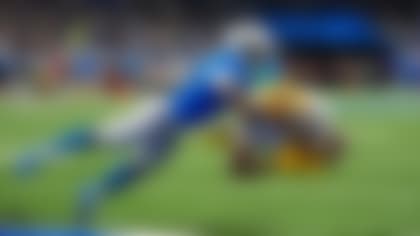NFL Photos | NFL Photography Gallery | NFL.com
From the Hall of Fame Archives: The 1930's All-Decade Team
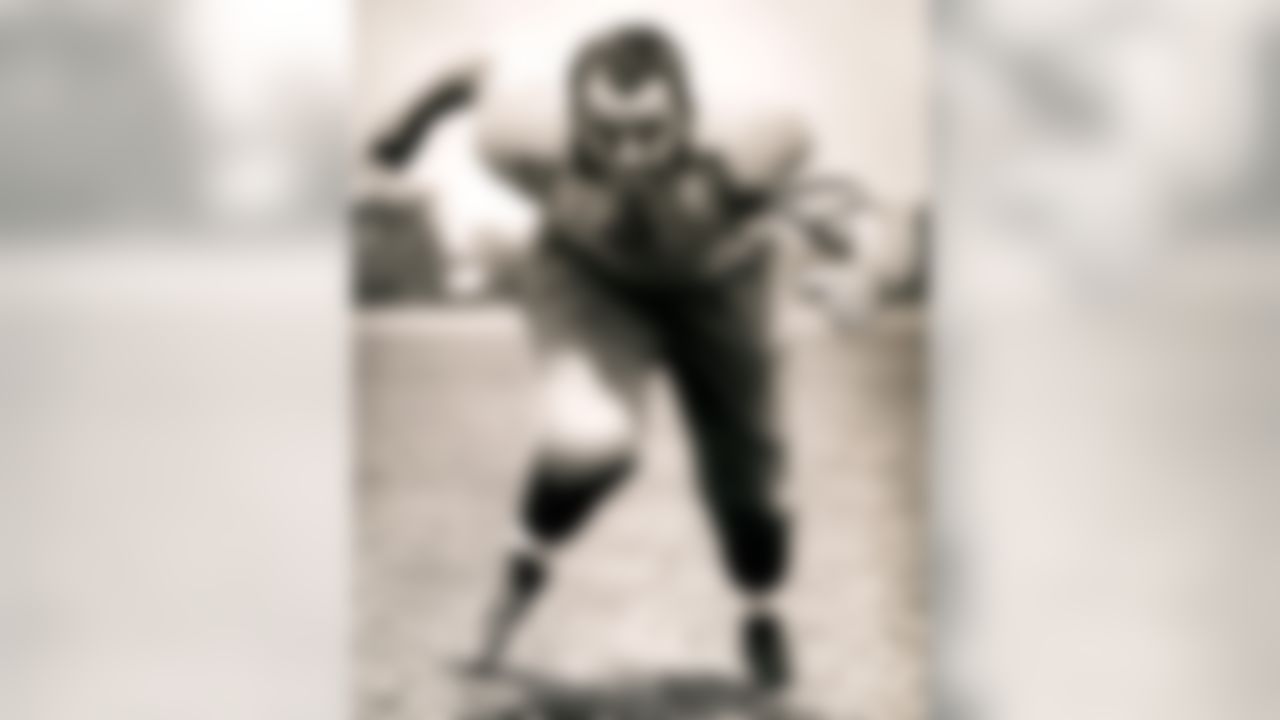
Bill Lee was a tackle for the Brooklyn Dodgers and Green Bay Packer's during the 1930's. He was a member of the Green Bay Packer's during their 1939 campaign which ended in a victory over the New York Giants in the 7th League Championship game. He played college football at Alabama. (Photo by Pro Football Hall of Fame)
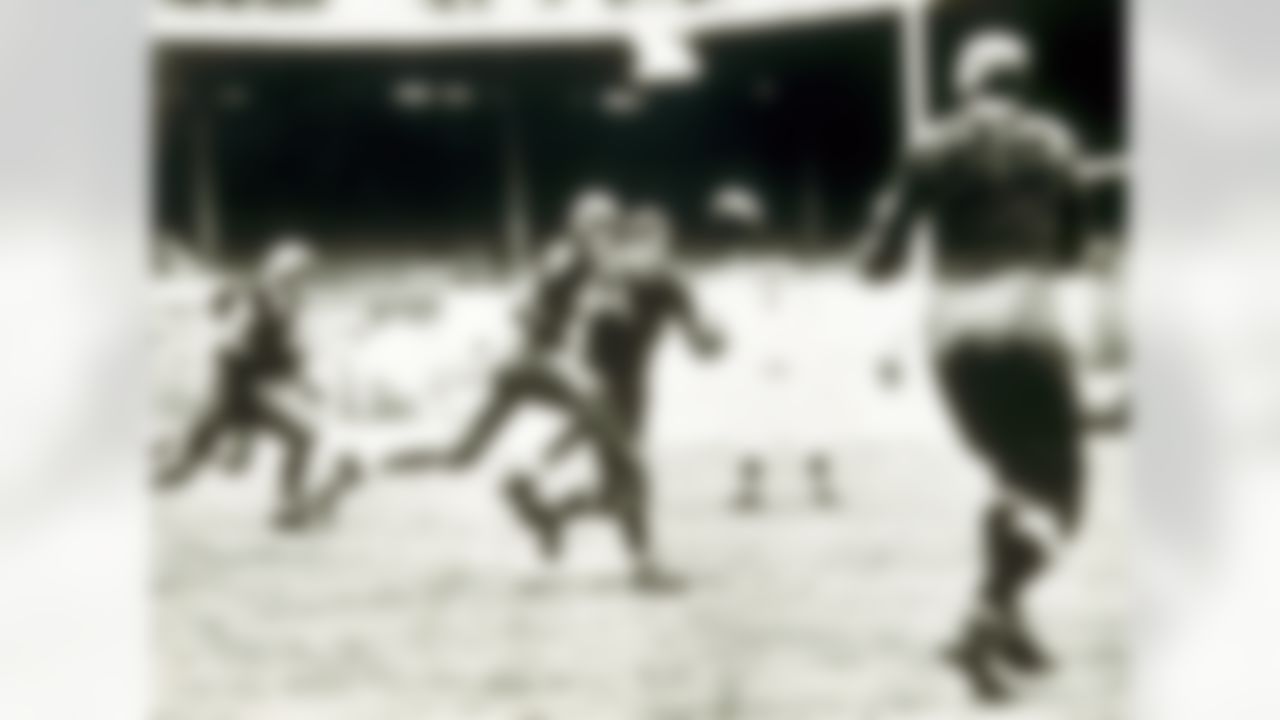
Chicago full back Bill Hewitt laterals to a teammate in the Bears 23-21 win over the New York Giants in the 1933 NFL Championship Game on December 17, 1933 at Wrigley Field in Chicago, Ill. A play call from Hewitt, shown here, called for a jump pass from fullback Bronko Nagurski. Hewitt would in turn lateral to another end, Bill Karr, racing toward the goal line. It was this play that gave the Bears a victory in the NFL's first championship game. Bill Hewitt is most often remembered for his stubborn refusal to wear a helmet. He finally donned headgear in his final NFL season but only because new NFL rules left him no choice. (Photo by Pro Football Hall Of Fame/NFL)
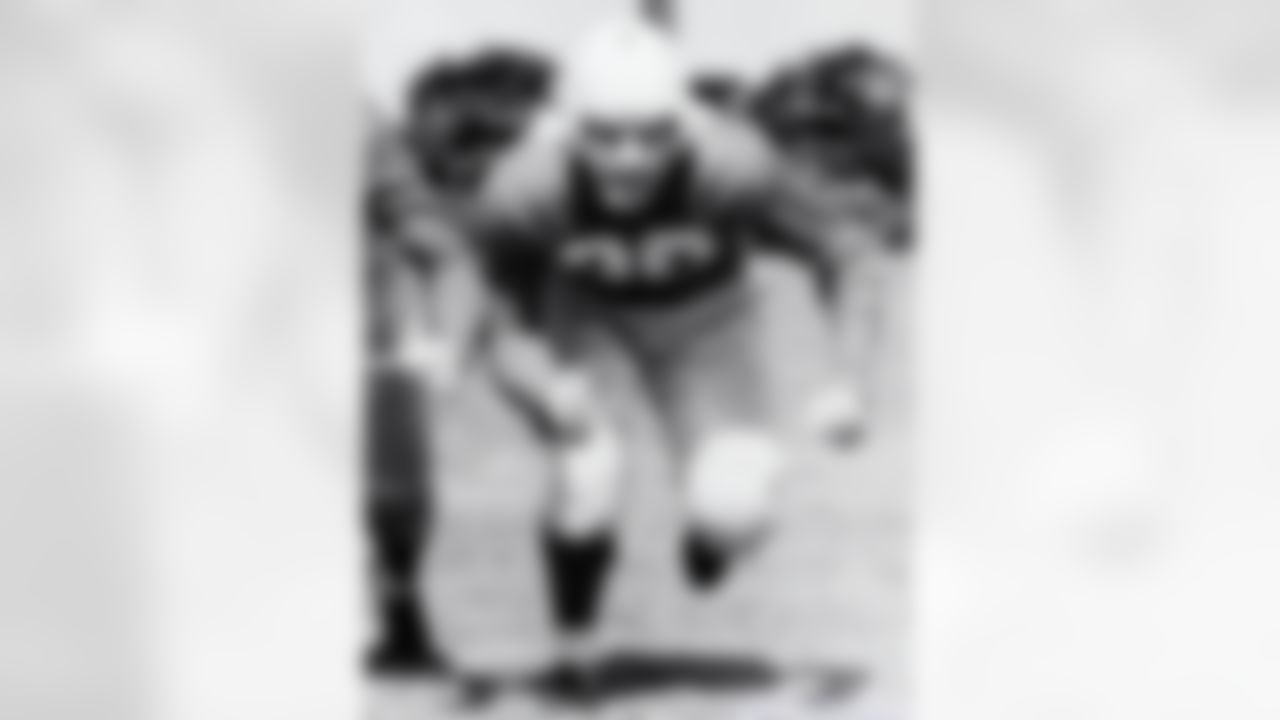
Ox Emerson began his pro career with the Portsmouth Spartans in 1931 for a salary of $75 per game. In 1934 he joined the Detroit Lions. With Emerson blocking and leading the way, the 1936 Lions team set a rushing record of 2,885 yards in a twelve-game season that lasted 36 years. It was finally broken by the Miami Dolphins in 1972 in a fourteen-game season. (Photo by Pro Football Hall of Fame)
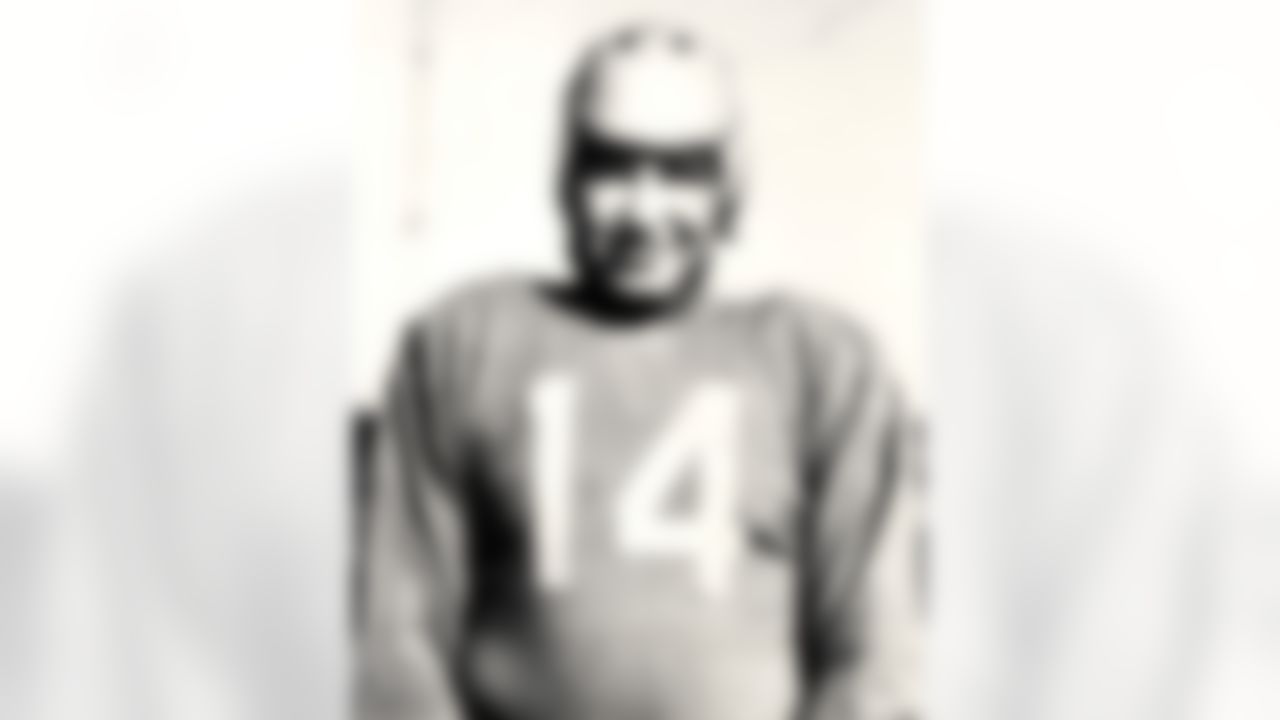
George Christensen was a member of the 1930's Detroit Lions. Unlike previous Detroit pro football teams, the new Lions team was loaded with some of the finest players of the day. Playing in the University of Detroit Stadium before crowds of 12,000, the Lions won the NFL championship in their second year, 1935. (Photo by Pro Football Hall of Fame)
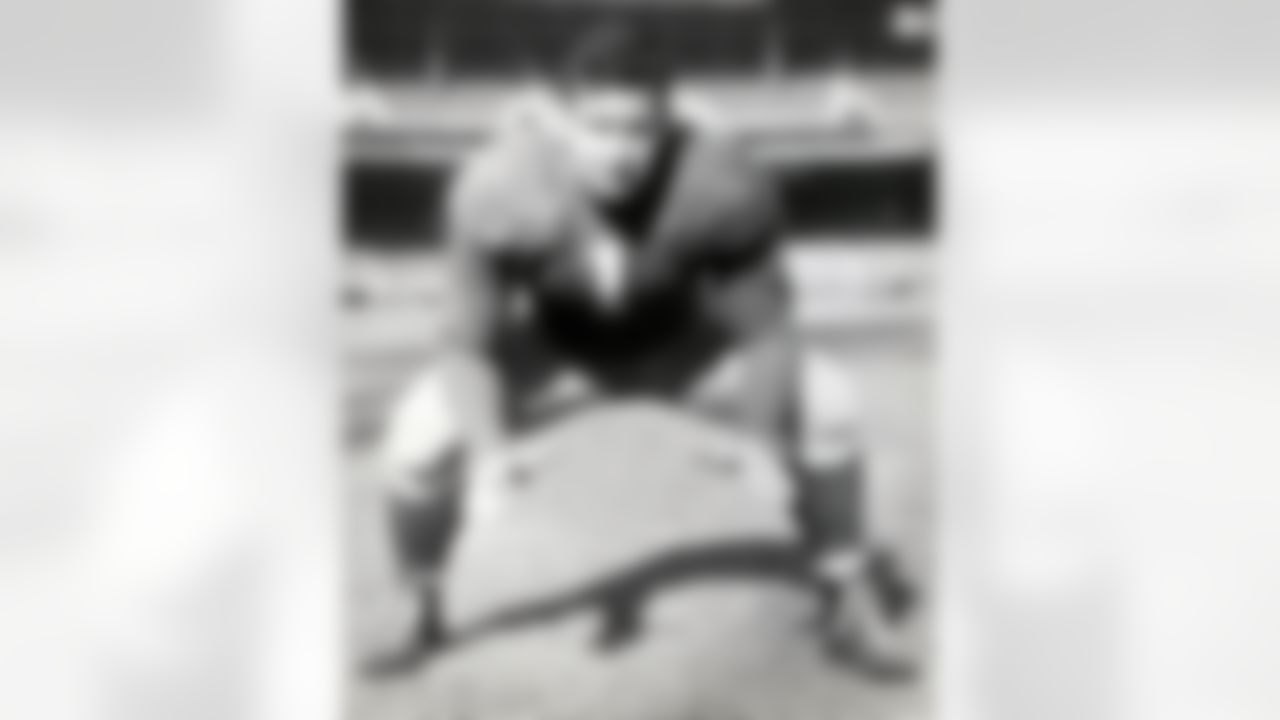
Frank Cope made his professional debut in the NFL in 1938 with the New York Giants. He played for the New York Giants for his entire 10 year career. (Photo by Pro Football Hall of Fame)
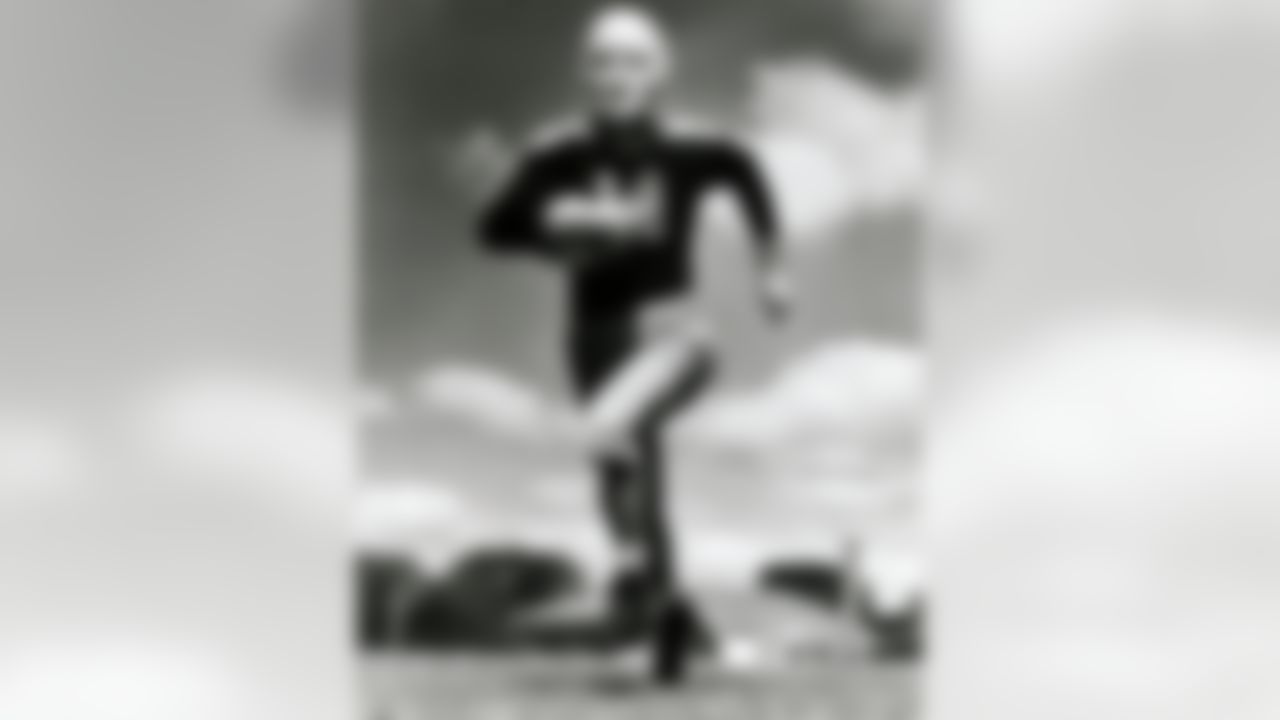
Green Bay Packers Hall of Fame wide receiver Don Hutson. Don Hutson's first touchdown came on an 83-yard pass from Arnie Herber in just his second game as a Green Bay Packer. He wound up with 99 career touchdown receptions, a record that stood for more than four decades. Hutson invented modern pass receiving; when he retired in 1945 after 11 seasons, he held 18 NFL records, including 488 career receptions. (Photo by Pro Football Hall Of Fame/NFL)
» Video: Don Hutson retrospective
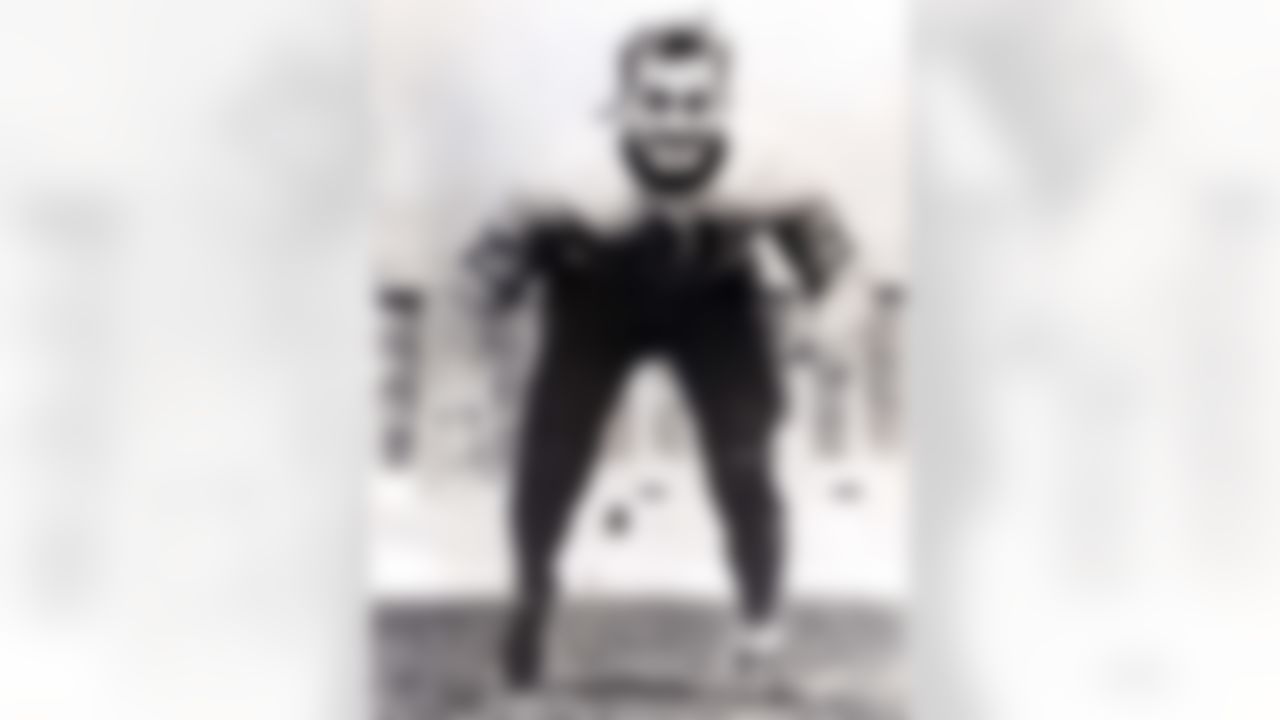
At 6' and weighing 210 pounds, Danny Fortmann, who was just 19 years old when he was drafted, appeared to be too small for line play in the NFL. By the time his rookie season started, Danny had turned 20 but was still the youngest starter in the NFL. The Bears were a dominant team during Fortmann's career, winning three NFL championships and and divisional titles on two other occasions. Fortmann was the top man at his position in pro football. He earned first- or second-team All-NFL honors all eight years of his career. (Photo by Pro Football Hall of Fame)
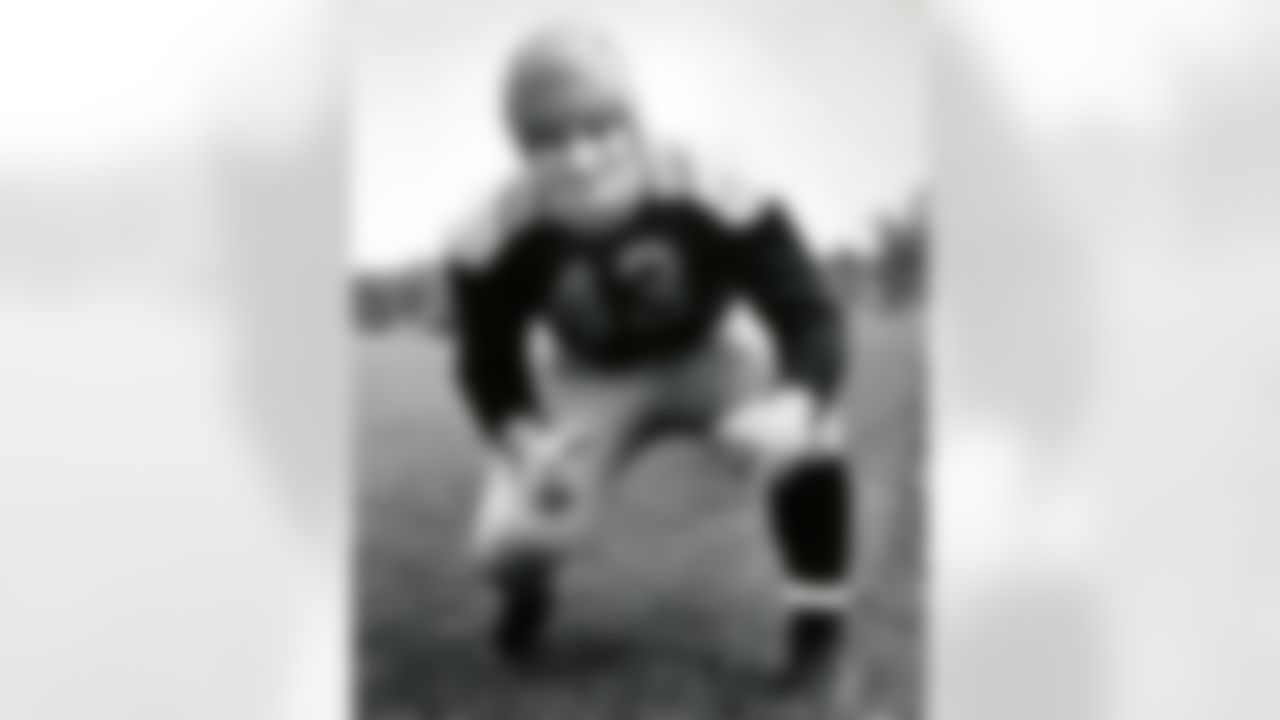
Charles "Buckets" Goldenberg was named All-Pro guard three times (in 1939, 1940, 1942) during his celebrated 13-year career with the Green Bay Packers from 1933 to 1945. Goldenberg came into the NFL as a highly touted fullback and rushed for 10 touchdowns before Packer coach Curley Lambeau got the idea of turning him into a lineman. Throughout most of his career, he played blocking guard on offense and middle guard on defens. His Packers won the NFL championship three times, in 1936, 1939, and 1944. (Photo by Pro Football Hall of Fame)
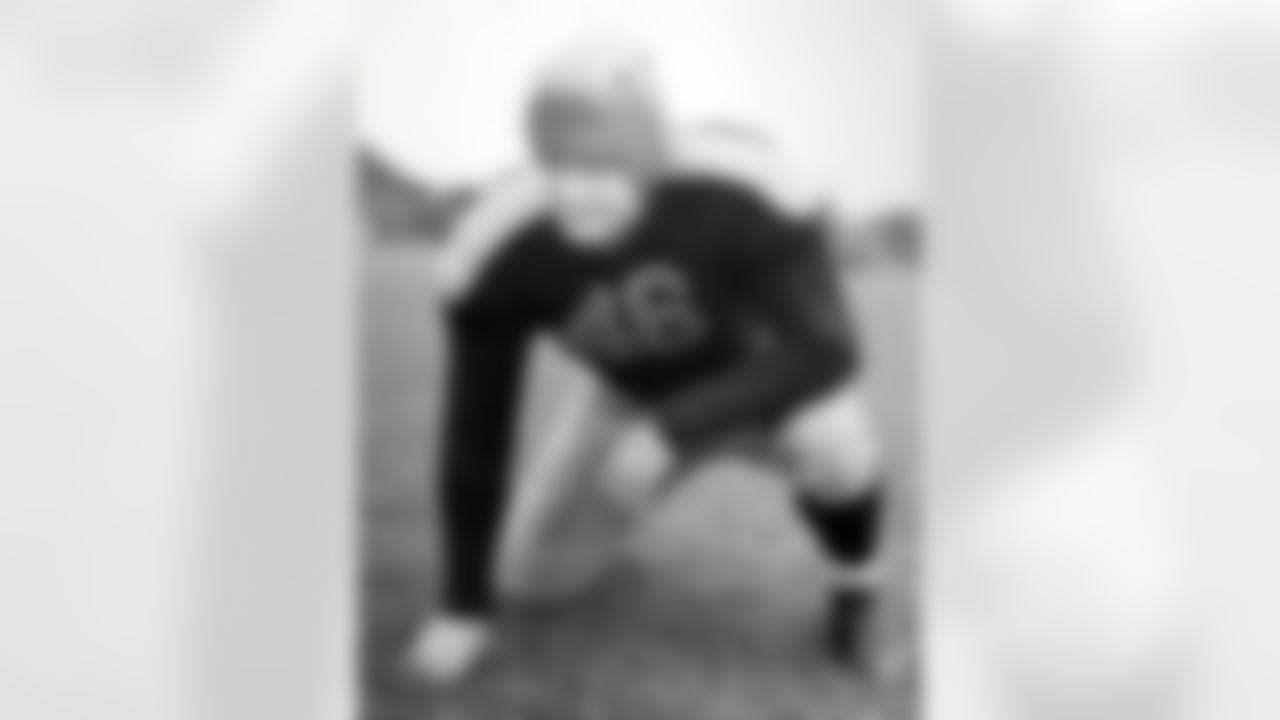
Willard Russell Letlow was drafted by the Green Bay Packers in the first round (seventh overall) in 1936. He remained with the Packers over a 10 year season, going to the Pro Bowl in 1938 and 1939. (Photo by Pro Football Hall of Fame)

Center Mel Hein of the New York Giants was a fixture in the center for 15 seasons. He was named first-team All-NFL center eight straight years from 1933 through 1940. He also earned second team All-NFL recognition five other times. In 1938, he was named the league's most valuable player, a rare honor for a center. He was the team captain for 10 seasons. (Photo by NFL/NFL)

Wayne Millner joined the Boston Redskins in 1936, contributing to their Eastern Division title run that year. For the next few seasons during which the Redskins won two more divisional titles and one NFL championship, he became the favorite target of the brilliant passer, Sammy Baugh. Millner was among the last of the outstanding two-way ends. When he wasn't catching Baugh's passes, he was blocking for him. He was competitive, determined, and known for his sure hands. (Photo by Pro Football Hall of Fame)
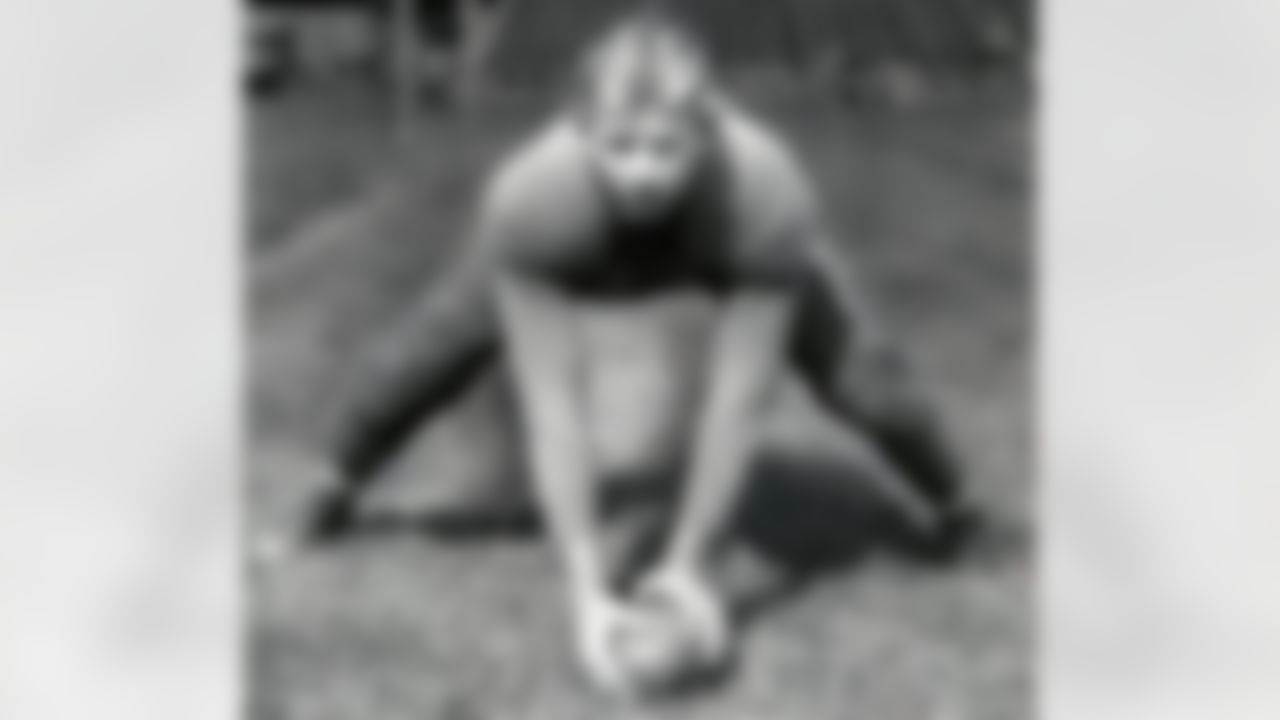
George Svendsen was the starting center on offense and a linebacker on defense on the Green Bay Packer's 1936 National Football League championship team. A fierce competitor who prided himself on playing 60 minutes in the era of two-way players, he endeared himself to his teammates and head coach Earl "Curly" Lambeau with his toughness and dependability. (Photo by Pro Football Hall of Fame)

Gaynell Tinsley attended Louisiana State University. He made his professional debut in the NFL in 1937 with the Chicago Cardinals. He played end for the Chicago Cardinals for his entire 3 year career. Most people believe that 1937 was Gaynell Tinsley's best year, as he hauled in 36 receptions, had 675 receiving yards and caught 5 TD passes. After the NFL, Tinsley returned to LSU to coach. (Photo by Pro Football Hall of Fame)
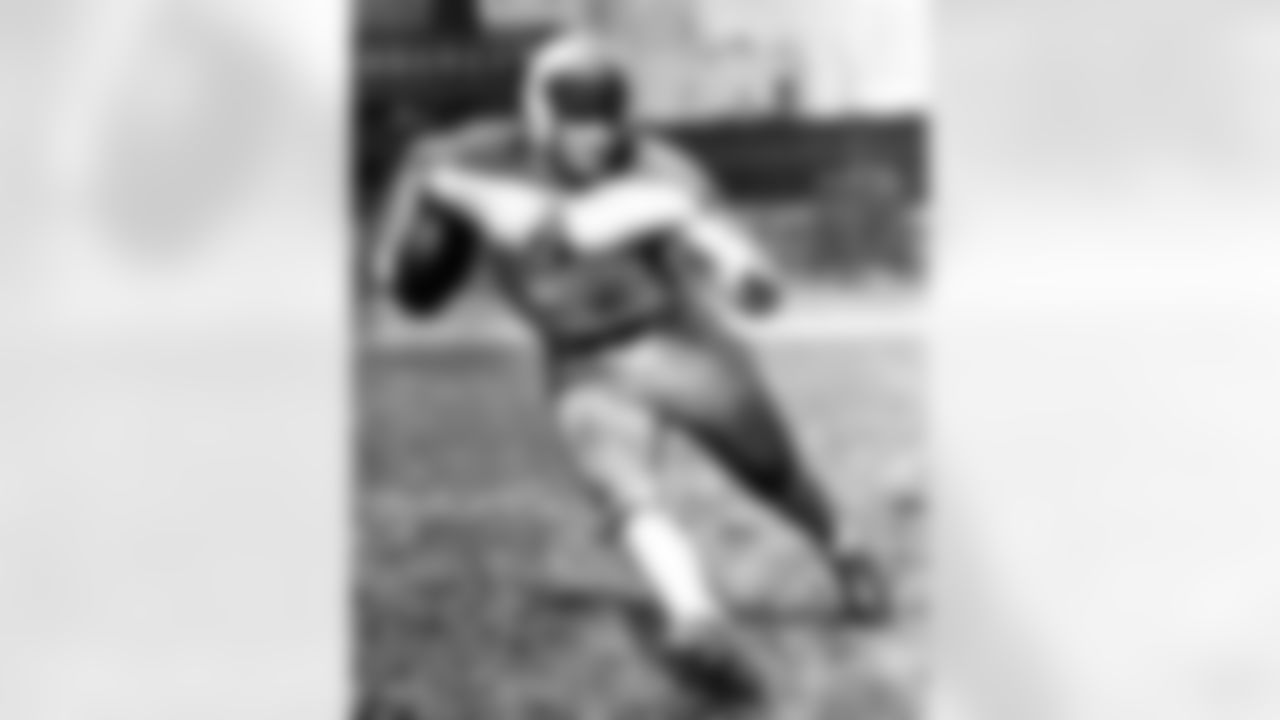
Alphonse Leemams, nicknamed "Tuffy," played for the New York Giants from 1936-39. Tuffy Leemans first came to the attention of the Giants when Wellington Mara, son of then-owner Tim Mara, witnessed Leemans play a spectacular game in college. He was inducted into the Pro Football Hall of Fame in the class of 1978. (Photo by Pro Football Hall Of Fame/NFL)
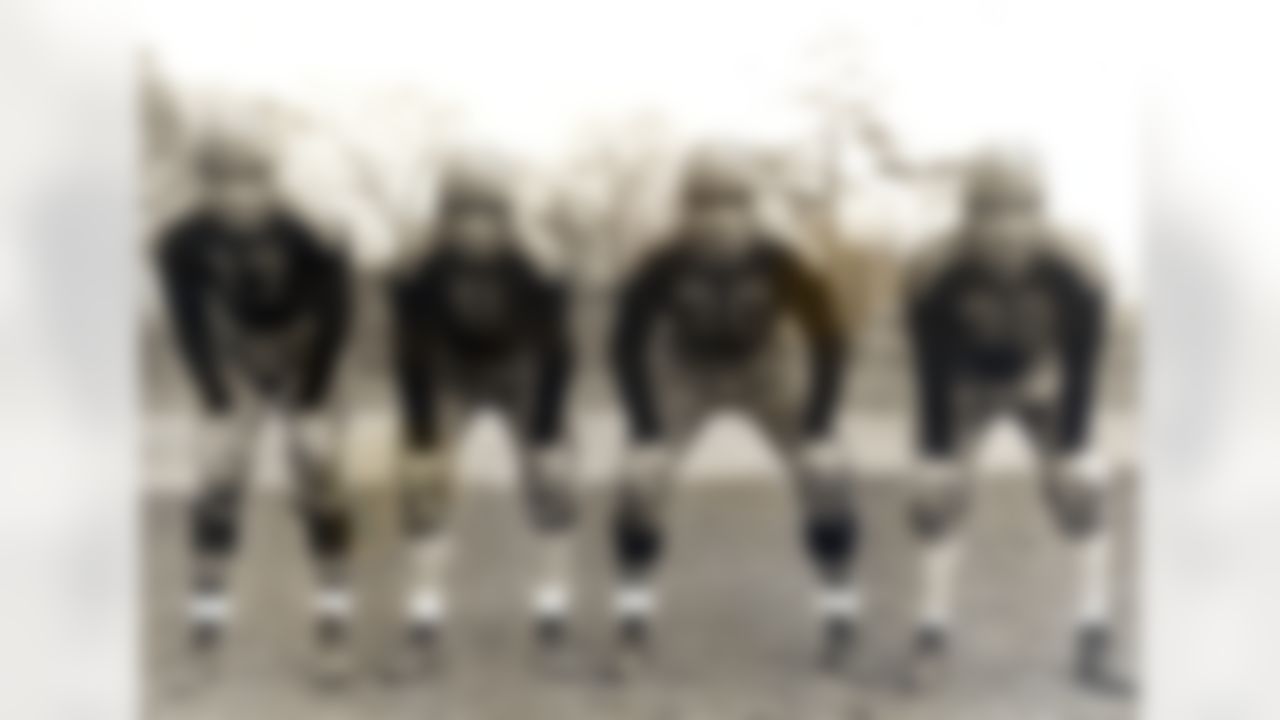
Arnie Herber threw a touchdown pass to give the Packers a 7-0 victory in the first game of his rookie 1930 season. The Packers won NFL titles in both 1930 and 1931 and remained in a perpetual contending position throughout Herber's 11-year tenure. His passes were always a dominating factor but he could also run, catch passes, and punt with the very best. Pictured here are (l-r) Cecil Isabell, Andy Uram, Clarke Hinkle, Arnie Herber of the Green Bay Packers. (Photo by Pro Football Hall Of Fame/NFL)

Running back Beattie Feathers is featured with Bronko Magurski on a poster for the Chicago Bears promoting their 1936 home games at Wrigley Field. Feathers played for the Chicago Bears, Brooklyn Dodgers and Green Bay Packers during his seven year career. He is credited as being the first player in NFL history to rush for over 1,000 yards in one season (1934). He held the NFL single season record for most yards per carry when he averaged 8.44 yards per attempt that same year, but the record was broken by Michael Vick during the 2006 season. (Photo by Pro Football Hall of Fame/NFL Photos)
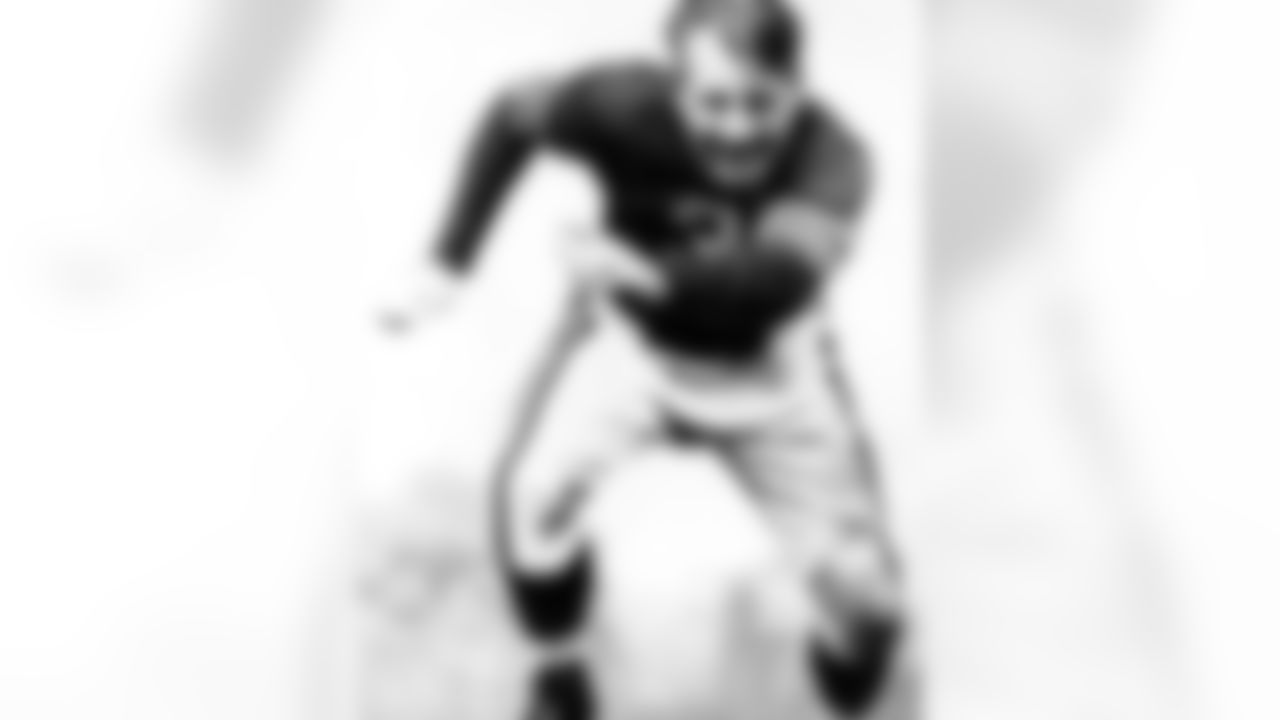
Bronko Nagurski, shown here in his comeback in 1943, was one of the most devasting runnners of the 1930s. Nagurski played for the Chicago Bears from 1930-1937 and 1943. Nagurski left after the 1937 season because of money disputes. When he rejoined the team for the single season in 1943, he led the Bears to another championship. Nagurski was inducted into the inaugural Pro Football Hall of Fame Class of 1963. (Photo by Pro Football Hall Of Fame/NFL)
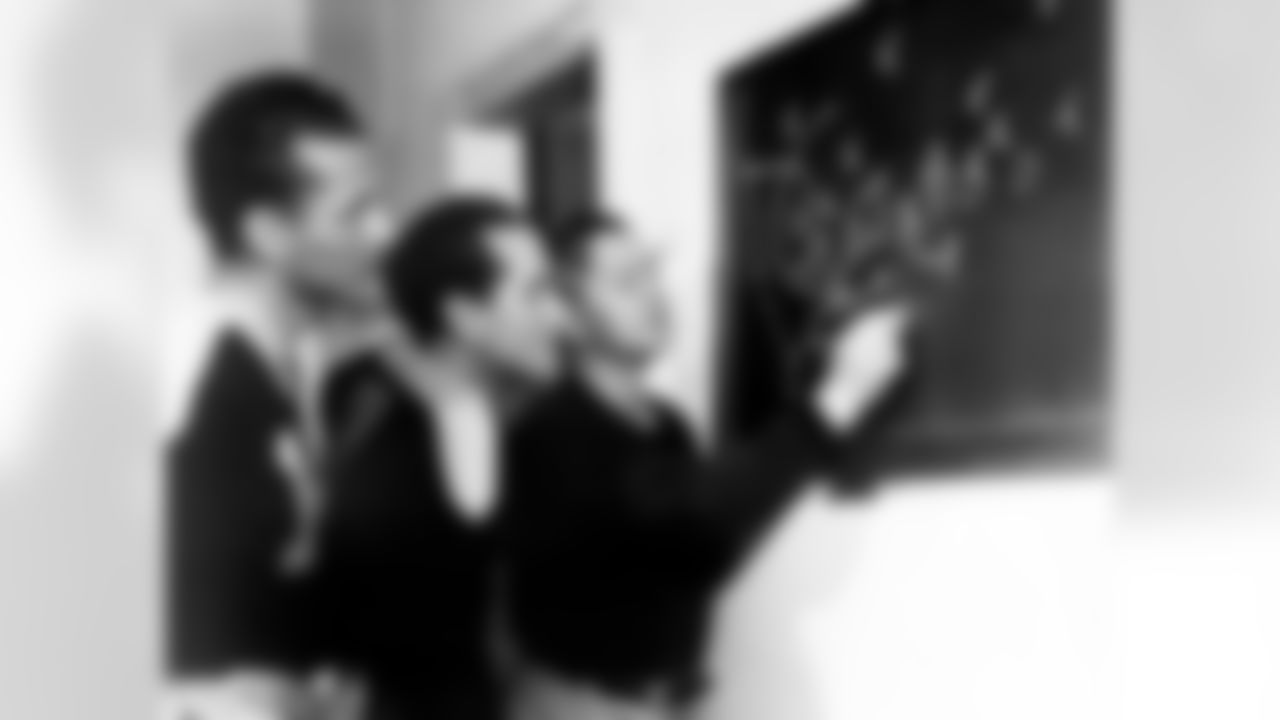
Cecil Isbell, center, was a very accurate passer and a good runner and he led the Packers in rushing and passing in his 1938 rookie year, a year which ended in a loss at the Championship Game to the Giants. In 1939 the Packers faced New York in a rematch from the year before. This time the Packers crushed the Giants 27-0, with Isbell throwing a 27 yard touchdown. Shown here, Green Bay Packers Hall of Fame head coach Earl "Curly " Lambeau diagrams a play on the chalkboard for quarterback Cecil Isbell and Hall of Fame end Don Hutson in 1940. (Photo by Pro Football Hall Of Fame/NFL)
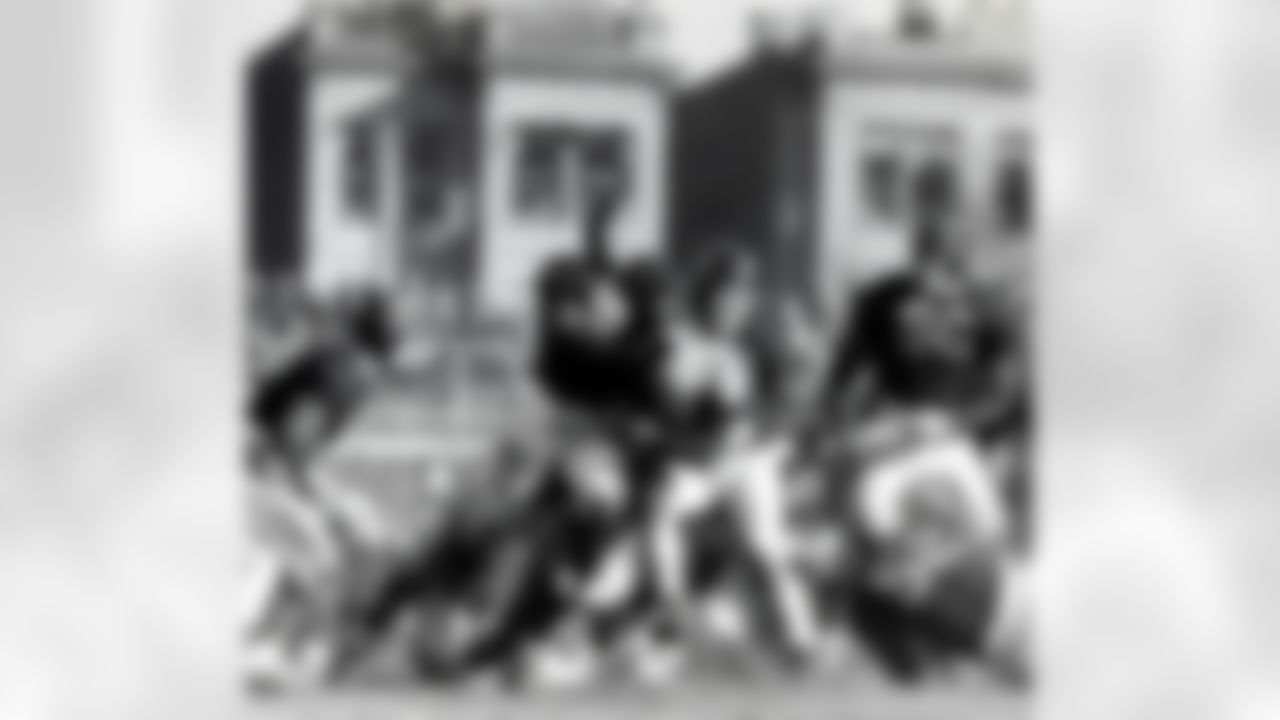
Clarke Hinkle of the Green Bay Packers is tackled by guard Ray Bray, fullback Bill Osmanski, and center Clyde "Bulldog" Turner of the Chicago Bears. As brilliant as he was on offense, Hinkle may have been even deadlier on defense. Backing up the Packers line, he was a vicious tackler against the run and terrific on pass defense. Hinkle proudly claimed he let only one receiver get behind him during his decade of pro football. (Photo by Pro Football Hall Of Fame/NFL)
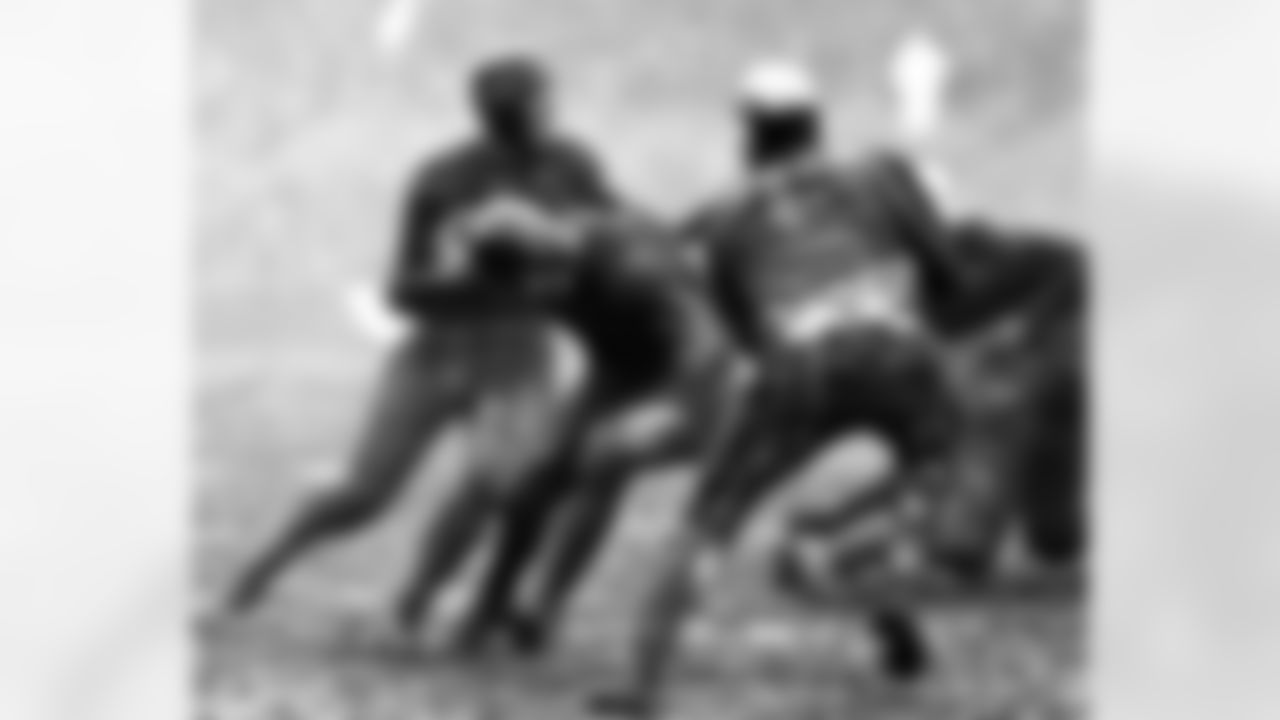
Cliff Battles, a sensational running back won the National Football League rushing title in 1932 as a rookie with the Boston Braves. The next year the Braves were renamed the Redskins and Battles became the first player ever to rush for more than 200 yards in a game. He accomplished in the feat on October 8, 1933 in a game against the New York Giants as he rushed 16 times for 215 yards, and scored one touchdown. (Photo by Pro Football Hall Of Fame/NFL)
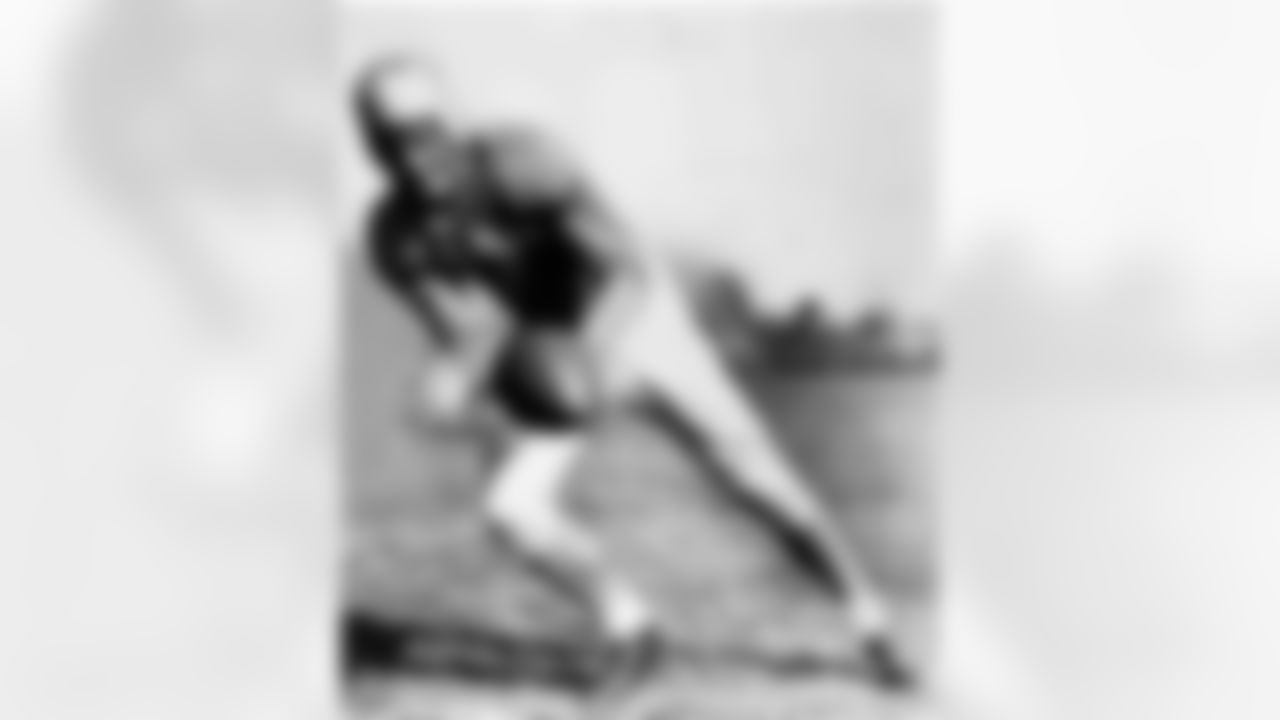
Hall of fame quarterback Earl "Dutch" Clark of the Detroit Lions. He played for the Lions from 1934 to 1938. He was called the quarterback because he called the plays. A true triple-threat back, Dutch consistently finished among the leaders in rushing and once completed 53.5 percent of his passes in a season when the league average was just 36.5 percent. He also led the league in scoring three times, kicked field goals and extra points and is generally considered the last of the great drop kickers. (Photo by NFL/NFL)

When Turk Edwards finished college he received offers from three National Football League clubs and he chose the highest bid �- $1,500 for 10 games from the newly organized Boston Braves, a team that would later take the name Boston Redskins and then move to Washington in 1937. Turk responded with nine superior seasons, winning All-NFL honors from major media outlets every year of his career except his last one. Turk is pictured here with the Class of 1969 Pro Football Hall of Fame enshrinees (Left to Right): Leo Nomellini, Earle (Greasy) Neale, Joe Perry, Ernie Stautner, and Albert Glen (Turk) Edwards. (Photo by Vernon Biever/NFL)
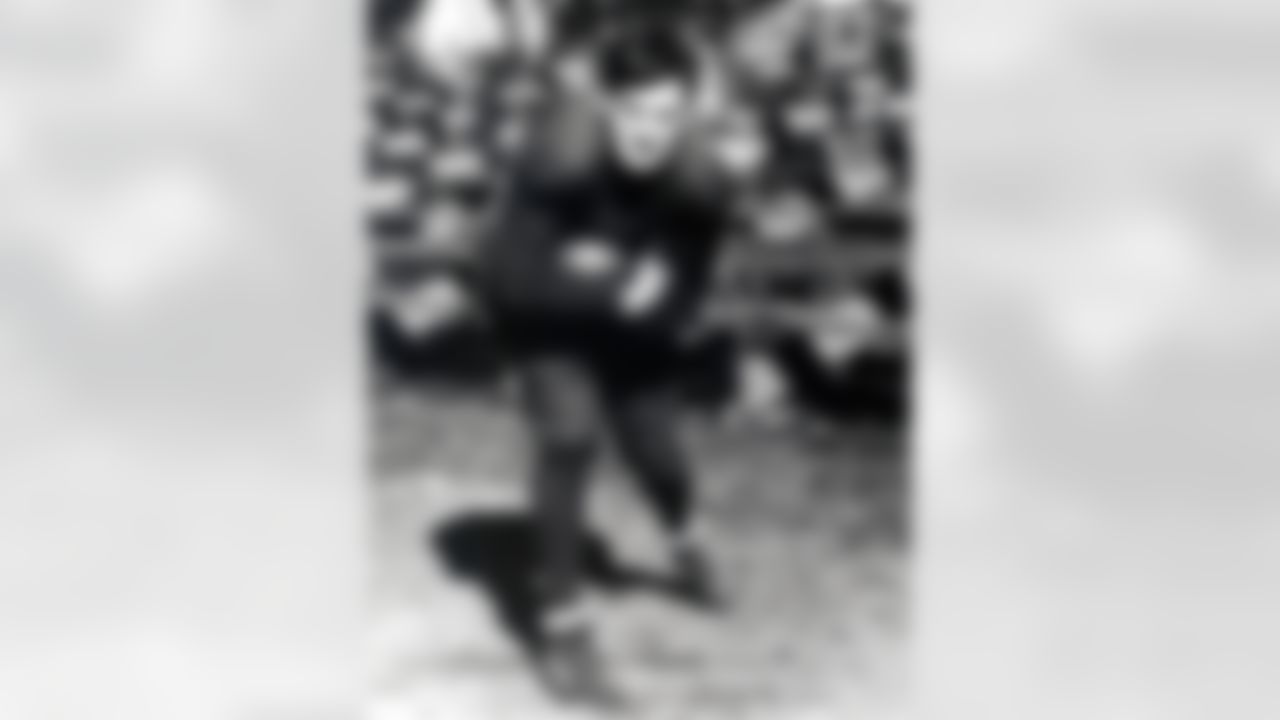
John Victor McNally became the famed "vagabond halfback" for his reputation as a totally unpredictable funster on and off the field. He assumed the "Johnny Blood" alias from Valentino movie title, "Blood and Sand". A superb runner with breakaway speed, exceptional pass receiver, he scored 49 TDs, 297 points in 14 seasons with five NFL teams. (Photo by Pro Football Hall Of Fame/NFL)
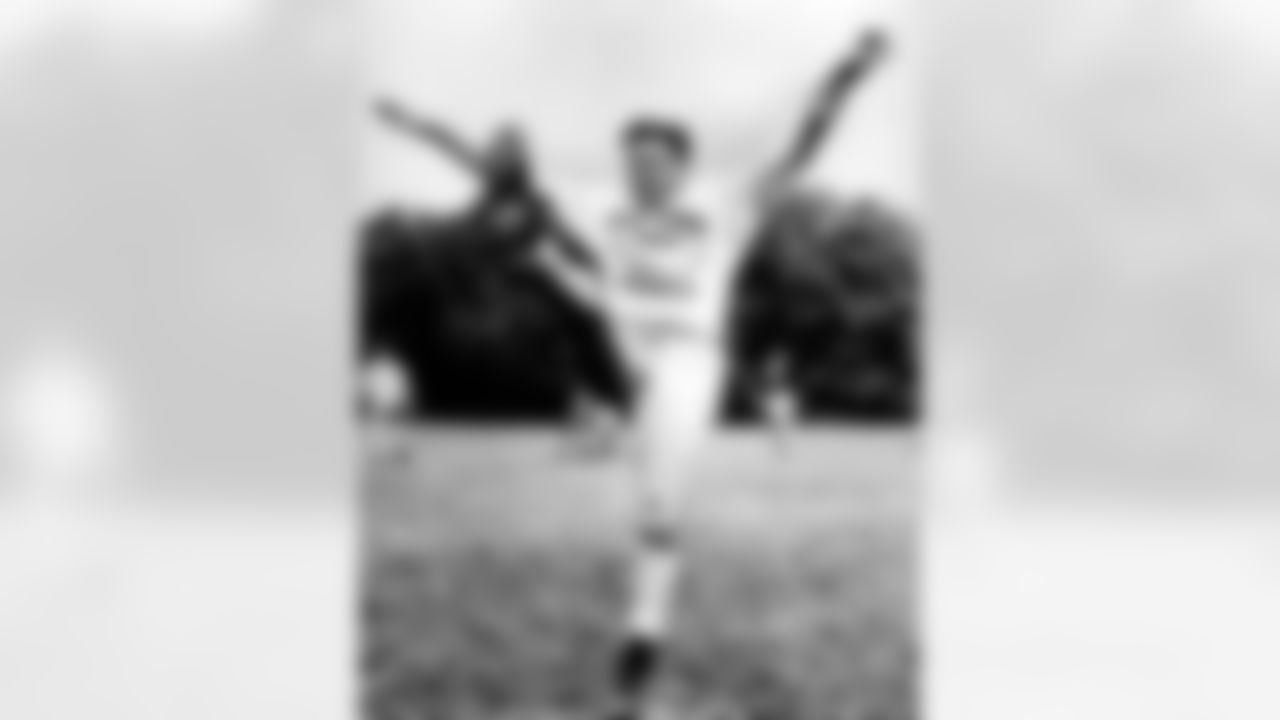
Punter Ken Strong of the New York Giants poses for a 1935 photo. Strong's most publicized performance in 14 years of pro football came in the 1934 National Football League Championship Game. Strong contributed 17 points on two touchdowns, two extra points and a field goal to lead his New York Giants to a 30-13 victory over the Chicago Bears. For almost 30 years, his 17-point performance stood as an NFL title game record. Strong could do everything - run, block, pass, catch passes, punt, placekick, and play defense - with the very best. (Photo by Pro Football Hall Of Fame/NFL)


